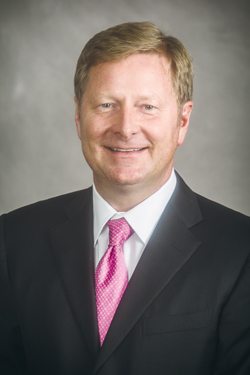What Happens Now that ObamaCare Has Cleared its Final Hurdle? (Opinion)
by December 10, 2012 12:01 am 92 views

Whether you fall into the category of serial procrastinator or forlorn political prognosticator, reality has to be sinking in at this point. The Patient Protection and Affordable Care Act is here to stay.
President Obama’s eponymous first-term legislative achievement cleared its final hurdle in November, and the largest government program expansion since Social Security and Medicare is 13 months away from full implementation.
Bureaucrats and special-interest groups are working overtime to fill the regulatory gaps in this behemoth, while individuals and employers are scrambling to figure out what it all means.
Otherwise known as health care reform, the new legislation requires:
• Most legal residents to obtain health insurance or pay a penalty.
• Federal and state creation of insurance “exchanges” whereby qualified individuals and dependents may obtain federal subsidies to reduce the cost of health insurance.
- Expansion of Medicaid to cover individuals and families below 138 percent of the federal poverty level.
- Penalties on certain employers who fail to provide minimum health benefits to their employees, and a 40 percent “Cadillac tax” on plans valued greater than $10,200 for individuals and $27,500 for families in 2018.
That’s just for starters.
Virtually every Arkansan will be affected by this law. Depending on your constituency, the mandatory benefit changes could be modest or significant. Constituencies fall under three major groups:
- The largest group is employers and employees, and accounts for roughly 145 million of the nation’s insured.
- The next group — about 40 million Americans — owns individual medical policies. Medicare and Medicaid beneficiaries make up the remaining covered population at 47 million and 45 million, respectively.
- It’s the final group — the 30 million to 40 million uninsured — for which this legislation was intended. On inspection of those numbers, it would appear the actual “uninsurable” population is around 10 million. Also counted in this group are people between jobs, those eligible for Medicare and Medicaid who haven’t enrolled, and the young who, feeling invincible, choose not to buy health insurance.
Employers have many important decisions to make by Jan. 1, 2014. Those with 50 or fewer full-time employees will start seeing the effects of community rating in early 2013, and will be introduced to a new term called “rate compression.”
By removing the ability to underwrite risk and providing guarantee-issue policies to all, insurers will no longer be able to apply discounts across a wide rating band for groups with favorable demographics.
Conversely, groups with older, less healthy employees will benefit by these rating tiers moving toward the middle. Early indications are we could see swings in small-group premiums of 25 percent to 50 percent. Plans deemed “grandfathered” will continue to follow the current rating formulas, but will still be subject to many of the new provisions.
Employers with more than 50 full-time employees face different challenges, and planning should be under way to determine if current programs comply with actuarial values and affordability testing. Medical plans not meeting these requirements face penalties ranging from $2,000 to $3,000 per employee.
Large employers will either continue offering health insurance to their employees and play by the new rules, or throw up their hands and pay the mandatory penalties. The latter sends a work force to fend for itself in one of the catch-all programs.
The law will continue to be modified in coming years, but there are some certainties: Most everyone will pay something for health coverage, and that coverage will, at least in the short term, be more expensive. And the health care system this country has known is changed forever.
Tom Hayes is executive vice president of the Life and Employee Benefits Division of Regions Insurance. He can be reached at 479-684-5259 or [email protected].
